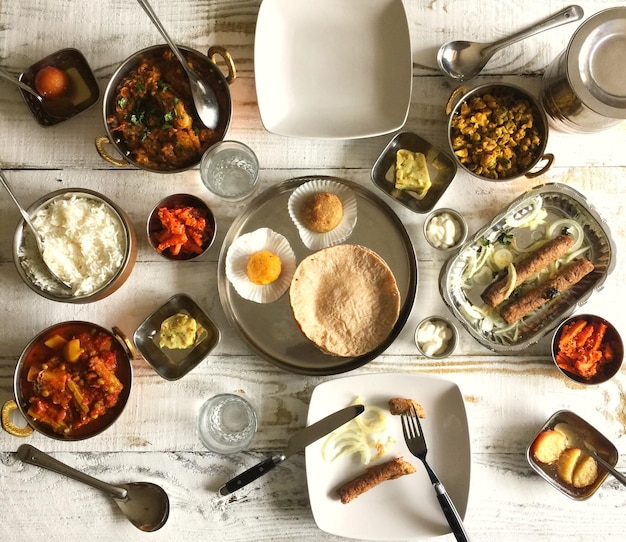Modern Heritage Recipes are bringing cultural memory back into the kitchen for younger generations who crave nostalgia but live with faster lifestyles and changing food habits. The delicious irony of today is that even while life becomes more digital, the desire for rooted tradition is getting stronger. Millennials may travel light, move frequently, and embrace global cuisines, yet the dishes they remember from their grandparents’ homes still hold unmatched emotional gravity.
Food is not just flavor—it is ancestry retold through technique and seasonings. The warmth of a slow-cooked broth, the aroma of stone-ground spices, the patient rhythm of fermentation, or the special way a grandmother roasted grains before kneading dough—these stories are flavor maps connecting identity to memory. When those practices are lovingly adapted into new-age cooking without losing their soul, heritage becomes alive again rather than archived.
Why Millennials Are Returning to Ancestral Foodways
This generation is far more global but also far more introspective. They want meaning in what they eat rather than just convenience. Somewhere between high-speed bite-sized snacking and exotic fusion cafés, there is a hunger for the grounding comfort that old recipes provide. People raised in modern apartments are now discovering millet flour, woodfire-inspired charring, cold-pressed oils, and region-specific spices once considered outdated.
It isn’t nostalgia alone driving this revival. Heritage cooking is quietly aligned with health-first principles that modern science is now validating. Slow fermenting improves gut health. Cold-pressed oils improve heart balance. Clay pots upgrade mineral absorption. These weren’t “trends” when older generations used them—they were survival wisdom.
The Emotional Power of Story-Based Cooking
Unlike trending food reels, heirloom dishes carry stories. A festive pickle jar is never just pickles—it is seasons preserved in salt and sunshine. A winter stew is memory stock simmered through repetition. When a young cook prepares a historic family dish with a millennial-time twist—say, roasted instead of deep-fried, or pressure-cooked instead of wood-fired—what comes alive is not imitation but inheritance.
Kitchen stories often travel further than ingredients. That is where Modern Heritage Recipes become cultural bridges instead of replicas. They reconnect people to a lineage without demanding the same environment their ancestors had. Texture changes, technique modernises, but intention survives.
How Tradition Meets Convenience Without Losing Integrity
Millennial cooking habits look different. Smaller kitchens, smaller time windows, smaller energy budgets. Traditional recipes once depended on long simmering, clay marinating, sun-aging, or firewood charcoal heat. Today, the same essence can be achieved through slow cookers, steam ovens, dehydrators, and cast-iron skillets.
When treated respectfully, modernization becomes a language of preservation, not disruption. Legacy dishes adapt the way language adapts—alive but recognisable. A grandmother’s stew may now be made plant-based, or a festive sweet might be baked instead of fried, yet the emotional temperature remains warm.
Old Flavor Logic, New Ingredients
What makes Modern Heritage Recipes special is not the exact ingredient list but the flavor philosophy behind them. Indian spice roasting, Japanese fermentation, Mediterranean herb curing, Middle Eastern seed toasting—each was originally crafted for preservation as much as for taste. Millennials admire that functional wisdom.
Heritage cuisines also carried intuitive grounding. Seasonal produce was not just practical—it was metabolic rhythm. Morning dishes differed from evening dishes not because of rules but because of biology. Reviving those patterns in a modern lifestyle brings both comfort and balance without the noise of diet culture.
Cultural Identity Served Through a Contemporary Plate
Many young adults today are rediscovering identity through food more than through language or rituals. Cooking becomes a quiet form of cultural literacy. A handwritten recipe passed down from a grandmother becomes a living archive once it enters a modern kitchen. Even a slight modification—switching refined grains for whole ones, or using air-frying instead of deep fat—still protects the emotional DNA of the dish.
This is why so many chefs now champion ancestral food knowledge. Instead of extracting heritage into “exotic cuisine,” they are grounding it back into lived experience. Culinary identity becomes participatory rather than performative.
A Heritage Dish Is Also a Memory Ritual
The act of recreating a traditional dish is often part cooking, part remembrance. The stirring rhythm may remind someone of a mother’s voice in the kitchen. The tempering splutter might echo a holiday morning. These rituals are not measured by seasoning spoons or timers—they are measured by presence.
Even when updated, Modern Heritage Recipes carry that ritualistic imprint. Whether it is fermenting dough overnight in a modern refrigerator instead of a mud pot on a courtyard shelf, or slow-roasting spices on an induction pan instead of open flame, the soul of the process remains intact.
Health Rediscovered Through Ancestral Logic
Millennials are also rediscovering how intuitive old-world food science really was. Fermented foods served before main meals improved digestion. Ghee in moderation supported brain function. Stone-ground grains absorbed slower than processed flours. Heritage dishes were designed through lived experience, not packaging slogans.
Reintroducing those principles—without romanticising hardship—makes heritage recipes feel timely rather than old-fashioned. This is the deeper reason the revival is sustainable rather than nostalgic.
The Future of Heritage Cooking Lives in Hybrid Craft
When a new generation carries forward ancestral recipes, they don’t need to recreate the past—they need to reanimate it. That is exactly what Modern Heritage Recipes accomplish. They allow a young cook to stay loyal to flavor memory while still living in an era of instant pots, digital food diaries, and cross-cultural palettes.
This is how tradition survives—not by remaining frozen, but by staying responsive, breathing, adaptable, and loved.
Read also:
carajillo recipe
menu solaria 2025
daftar menu mie gacoan
cookout menu with prices
pakistan national cricket team vs new zealand national cricket team match scorecard
sri lanka national cricket team vs bangladesh national cricket team match scorecard
mumbai cricket team vs jammu and kashmir cricket team match scorecard
